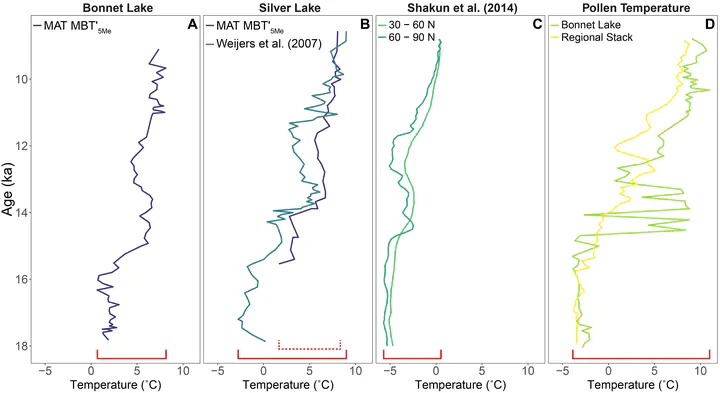Deglacial Temperature Controls on No-Analog Community Establishment in the Great Lakes Region

Abstract
Understanding the drivers of vegetation dynamics and no-analog communities in eastern North America is hampered by a scarcity of independent temperature indicators. We present a new branched glycerol dialkyl glycerol tetraether (brGDGT) temperature record from Bonnet Lake, Ohio (18 - 8 ka) and report uncertainty estimates based on Bayesian linear regression and bootstrapping. We also reanalyze a previously published brGDGT record from Silver Lake, Ohio, using improved chromatographic methods. All pollen- and brGDGT-based temperature reconstructions showed qualitatively similar deglacial trends but varying magnitudes. Separating 5- and 6- methyl brGDGTs resulted in substantially lower estimates of deglacial temperature variations (6.4 degrees C) than inferred from earlier brGDGT methods and pollen (11.8 degrees C, 12.0 degrees C respectively). Similar trends among proxies suggest good fidelity of brGDGTs to temperature, despite calibration uncertainties. At both sites, the rise and decline of no-analog communities closely track brGDGT-inferred temperatures, with a lag of 0-150 years. The timing of temperature and ecological events varies between Bonnet and Silver Lakes, likely due to age model uncertainties. Climate sensitivity analyses indicate a linear sensitivity of vegetation composition to temperature variations, albeit noisy and significant only with a 500-year bin. The formation of no-analog plant communities in the upper Midwest is closely linked to late-glacial warming, but other factors, such as temperature seasonality or end-Pleistocene megafaunal extinctions, remain viable.